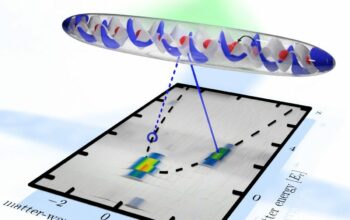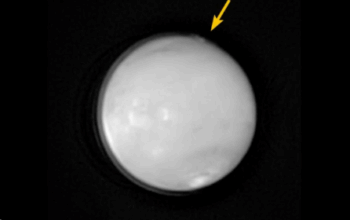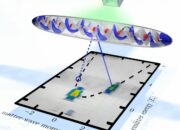Photonic integrated circuits (PICs) are poised to revolutionize the landscape of modern technology, merging the realms of optics and electronics to create devices that harness the unique properties of light. The evolution of these circuits represents not merely an incremental enhancement in performance but a fundamental paradigm shift that promises to transform telecommunications, computing, and sensing technologies. This article delves into the intricate workings of photonic integrated circuits, elucidating their components, operation principles, and the extensive applications that define their significance.
At their core, PICs are micro-scale devices that integrate multiple photonic functions onto a single substrate. By doing so, they facilitate the manipulation of light in ways that mimic the actions of traditional electronic circuits composed of resistors, capacitors, and transistors. The primary objective of a PIC is to exploit the various properties of photons—such as amplitude, phase, frequency, and polarization—enabling the implementation of complex optical processes with unprecedented precision and efficiency.
One fundamental aspect of a PIC is its constituent components, which typically include waveguides, modulators, detectors, and lasers, all fabricated onto a semiconductor chip. Waveguides serve as the conduits for photons, directing light within the circuit with minimal loss and distortion. Various materials can be utilized for waveguides, including silicon, indium phosphide, and polymers, each selected based on specific application requirements regarding dispersion, attenuation, and refractive index.
Modulators play a pivotal role in controlling the properties of light traveling through waveguides. By altering the amplitude or phase of the light waves in response to electrical signals, modulators can encode information into the light. This capability is crucial for applications in telecommunications, where data is transmitted over fiber-optic networks. Advanced modulation techniques, such as mach-zehnder modulators, enable high-speed switching and have become a cornerstone in the development of integrated optical systems.
Similarly, photodetectors are integrated into PICs to convert optical signals back into electrical signals for processing. These devices employ semiconductor materials to absorb photons, generating charge carriers that correspond to the intensity of the incoming light. The efficient integration of photodetectors within a PIC framework minimizes the need for external components, thereby reducing the overall footprint and enhancing performance.
The technology behind the development of lasers on PICs is equally significant. Integrated lasers, such as semiconductor lasers or ring lasers, can be fabricated directly onto the photonic chip. This integration facilitates the creation of compact and highly efficient optical sources tailored to specific applications. Moreover, monolithic integration of lasers with other photonic components fosters seamless interaction between light generation, modulation, and detection, paving the way for sophisticated functionalities.
One of the fascinating facets of PICs lies in their ability to leverage quantum phenomena. Quantum optics, the study of the interaction between light and matter at the quantum level, provides valuable insights that can enhance the performance of PICs. Quantum dots, for example, are nanometer-sized semiconductor particles that exhibit unique optical properties. These structures can be integrated into PICs to enhance emission efficiency or create sources for quantum communication applications—an area poised for explosive growth as societies move toward quantum technologies.
As we explore the potential of photonic integrated circuits, it is imperative to discuss their applications. The telecommunications industry stands to benefit profoundly from the implementation of PICs. By providing high-speed data transmission capabilities and enabling dense integration of components, PICs can significantly reduce costs while enhancing throughput in fiber-optic networks. The escalating demand for bandwidth in the era of the Internet of Things (IoT), cloud computing, and 5G networks further highlights the urgency for adopting photonic solutions.
Beyond telecommunications, the integration of photonics into data centers marks another burgeoning application. As servers grapple with ever-increasing data volumes, the limitations of electronic interconnects become apparent. PICs offer a viable solution through optical interconnections that minimize latency and power consumption while maximizing data transfer rates. These capabilities are vital in future-proofing data infrastructures as they scale to accommodate exponentially growing data workloads.
In the realm of sensing technologies, PICs contribute to advancements in environmental monitoring, medical diagnostics, and industrial automation. Optical sensors, once confined to discrete components, can be inexpensively fabricated on photonic chips, allowing for compact, highly sensitive, and cost-effective solutions. This innovation opens new avenues for real-time monitoring of various parameters, ranging from pollutants in air and water to health indices derived from biological samples.
Despite the boundless promise of photonic integrated circuits, barriers remain that must be surmounted. The need for precise fabrication techniques and the development of standardized testing methods are critical to ensuring reliability and performance consistency. Moreover, materials limitations continue to present challenges in broadening the operational wavelength range of PICs, necessitating ongoing research to unlock new materials and methods that can coax more functionalities from these devices.
In conclusion, the intricate mechanics of photonic integrated circuits unveil a captivating vista of technological potential. By harnessing the unique properties of light and merging them with established electronic principles, PICs herald a transformative phase in various sectors, invigorating telecommunications, data processing, and sensing applications. As research and development efforts continue to advance, the allure of photonic technologies grows ever stronger, piquing curiosity while igniting a revolution in how we understand and exploit the physical properties of light.










